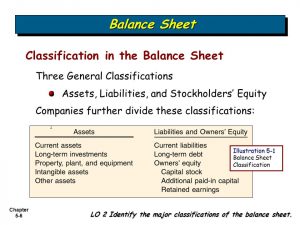Content

If he is rational, he will still see the accounting profit as a profit but having such a big difference in the economic profit might convince him to move back to being a doctor. When a firm is experiencing an economic profit, they can increase their production. If a firm is earning an economic loss, they will most likely respond by decreasing their output.
The company decides to manufacture steel products and earns $3 million, but it incurs expenses of $2.5 million. An accountant subtracts an extra amount for depreciation of the machinery and equipment. Depreciation is a real cost because the equipment are not as good as new once they are used, although it’s not an explicit cost. An implicit cost is the monetary value of the benefits that have been forgone by choosing an alternative. A firm may report relatively large monetary profits, but by creating negative externalities their social profit could be relatively small or negative. An externality including positive externality and negative externality is an effect that production/consumption of a specific good exerts on people who are not involved.
Normal Profit in Macro Economics
It is also possible to use normal profit metrics to ascertain whether or not a company has a monopoly within an industry or whether a group of companies has an oligopoly. If more businesses do enter the market, costs go down and make it more difficult for a company to maintain a monopoly. Then, once enough businesses leave the industry, competition will have decreased enough for the remaining businesses to move closer to or even make a normal profit. These costs are also called implied costs or opportunity costs. Profit maximization is the short run or long run process by which a firm determines the price and output level that returns the greatest profit.
What is normal profit and abnormal profit?
In economics, abnormal profit, also called excess profit, supernormal profit or pure profit, is "profit of a firm over and above what provides its owners with a normal (market equilibrium) return to capital." Normal profit (return) in turn is defined as opportunity cost of the owner's resources.
Accounting profit considers explicit costs and depreciation whereas economic profit considers explicit costs and implicit costs. Since economic profit includes opportunity cost, which is an implicit cost, accounting profit is often be higher than economic profit. Normal Profit is the minimum amount of profit required by the entity for its perpetual succession.
Profits in Long Run Pure Competition
Normal Profit Definition the basic normal law of demand in economics. Explain what is economic cost and describe the types of economic costs.
Normal profit is a profit metric that takes into consideration both explicit and implicit costs. It may be viewed in conjunction with economic profit. Normal profit occurs when the difference between a company’s total revenue and combined explicitandimplicit costs are equal to zero. The following graph offers a simplified illustration. At the profit maximizing level of production, which is 6, average costs are 6.
Types of Profit: Economic Profit and Accounting Profit Examples
Normal profit occurs when economic profit is zero or alternatively when revenues equal explicit and implicit costs. Normal and economic profits differ from accounting profit, which does not take into consideration implicit costs. It chooses the point where marginal cost equals marginal revenue or price. Meanwhile, companies in the oligopoly market face few competitors, so the competitive pressure is relatively low. Some companies may have significant market power because they control a significant share of the market. They can generate positive economic profit in several ways, including through differentiation. Combined with the high barriers to entry, it allows them to maintain abnormal profit over time.
- An oligopoly usually has « economic profit » also, but usually faces an industry/market with more than just one firm .
- If the profit maximizing quality and the revenue maximizing quantity are the same then the variable costs are zero.
- Then, once enough businesses leave the industry, competition will have decreased enough for the remaining businesses to move closer to or even make a normal profit.
- It chooses the point where marginal cost equals marginal revenue or price.
- The same concept applies to buying or renting a home and investing money.
- The student then decides to enter the master’s degree program.
If the https://personal-accounting.org/ falls below CB, the firm will lose money, i.e. will earn less than normal profits. Since there is little friction to market entry, the firms can enter freely to get a piece of the pie until the market starts making normal profit.
Frequently Asked Questions about Types of Profit
Economic profit is much more prevalent in uncompetitive markets such as in a perfect monopoly or oligopoly situation, where few substitutes exit. In these scenarios, individual firms have some element of market power. Although monopolists are constrained by consumer demand, they are not price takers, but instead either price or quantity setters. Since the output effect and the price effect, marginal revenue for uncompetitive markets is very different from marginal revenue for competitive firms.